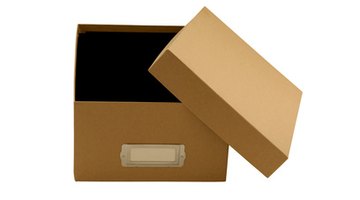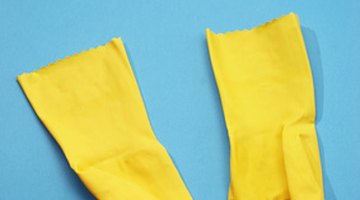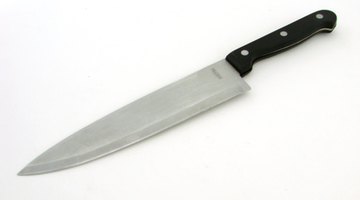How to Use Rancid Oil for Soap
It can be aggravating to pull out a bottle of oil from your pantry only to find it has gone rancid and smells rank. Sure, you can use it to start a bonfire, get your smoker started or even add to your oil furnace, but why not try something a little more imaginative, like making soap.

Things You Will Need
- Small box or plastic container
- Freezer paper
- Salt
- Lye crystals
- Vegetable oil
- Water
- Gravy/oil separator
- Stainless steel pot
- Rubber spatula
- Stainless steel spoon
- Plastic pitcher
- Eye goggles
- Rubber gloves
Vegetable oils make fine white soaps, traditionally called castile soap, when the oil used was olive oil. Oils are actually easier to use than the animal fats in homemade soaps. Washing the rancid oil with brine will freshen it before you make the soap.
-
Line a box with freezer paper to use as a soap mold. It does not have to be heat resistant, just able to withstand moisture. Press the paper in the corners and tape it down to secure. Alternatively you can use a disposable plastic container, like a deli container.
-
Fill the plastic pitcher with water. Consult soapguild.org to determine the actual measurement, as it will vary depending on the type of oil or combination of oils you are using. Slowly pour in lye crystals according to amounts specified at the website to determine just how much lye to use for the type and amount of oil you are using. Stir this mixture with a rubber spatula until the crystals are dissolved. Make sure to wear your goggles and gloves, as the solution is very caustic. Do not breathe in the fumes while you stir. As it combines, it will produce heat to 200 degrees F., and it needs to sit until the temperature has cooled to about 110 degrees F.
-
Wash your oil with a brine made of 1 part salt to 10 parts of 180-degree water. You should have equal parts of water to oil. Stir vigorously until it looks cloudy, then allow it to separate. Pour off the oil with a gravy separator and throw away the brine.
-
Pour your oil into a 6-quart stainless steel pot while you are waiting for the lye to cool . Check the heat level with a thermometer and warm it slowly to about 110 degrees F., if necessary. Turn off the heat.
-
Pour the diluted lye into the oil in a steady stream and then stir with the rubber spatula or a whisk for about a minute until the mixture gets cloudy. Use your stick blender to continue blending until you reach the trace stage, where a slight trail follows your spoon. This usually takes 15 to 30 minutes.
-
Pour the mixture into the mold, scraping out the pot with the rubber spatula. Cover the soap with a layer of plastic wrap. Let it sit undisturbed for 48 hours. Be careful not to touch it without using rubber gloves.
-
Turn the mold upside down onto a flat paper-lined surface. Cut the block into smaller chunks with a stainless steel knife or cake cutting wire.
-
Cure the freshly made soaps for at least 45 days in a dark, dry spot, turning them several times to dry all the surfaces.








Tip
Between steps 5 and 6 you can add color, fragrance and herbs to your soaps for texture and smell.
Warning
Lye will burn quickly so wear protective gear and keep away from children. Mix the water and lye outside, if possible.
References
Writer Bio
Maryland resident Heide Braley is a professional writer who contributes to a variety of websites. She has focused more than 10 years of research on botanical and garden articles and was awarded a membership to the Society of Professional Journalists. Braley has studied at Pennsylvania State University and Villanova University.
Photo Credits
- bars of soap image by Jale Evsen Duran from Fotolia.com
- bars of soap image by Jale Evsen Duran from Fotolia.com
- empty brown box image by nTripp from Fotolia.com
- Formen image by Twilight_Art_Pictures from Fotolia.com
- salt image by Andrey Rakhmatullin from Fotolia.com
- thermometer image by Dusan Radivojevic from Fotolia.com
- clock image by Elena Nabokova from Fotolia.com
- rubber gloves image by AGphotographer from Fotolia.com
- knife image by dethchimo from Fotolia.com
- handmaid soap image by Natalia Leskina from Fotolia.com
More Articles



